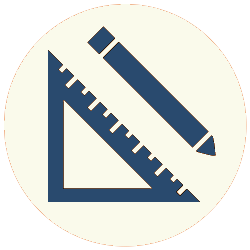Western United Insurance
I began working for a company whose software development department had grown from five to 60 members over the previous five years. At the time I came in, they were handling changes pretty much the same way they had been when they only had five people: walking over to each others’ desks and coordinating the change verbally, then writing a record of the change into an Excel spreadsheet.
I was given the task of devising a change management methodology, and implementing it with the new change management software we had installed. We rolled out the new process in three months.
We were able to significantly improve three metrics: defects per change went down about 40 percent, failed changes went down from about 10 percent to less than one percent, and ratio of emergency changes to normal changes dropped from about 30 percent to about 10 percent.
Jack Demmer Ford
A sales manager from a Ford dealership had an idea for a point-of-sale software application. Ford’s rebate program is rather convoluted, and they were having difficulty figuring out in real time which rebates applied in which sales situations.
“Chargebacks,” or money charged back to the dealer by the manufacturer for improperly awarded rebates and/or incentives, were a particular problem; since it was hard to know whether a particular rebate or incentive applied, managers were often not applying them when they were available. A secondary concern was to see if we could reduce unit holding costs by having a clearer picture of inventory age during the sales process.
I spent some time analyzing the business rules for rebates. Some rebates are awarded to people (military members, school teachers, etc.), some are awarded for lease deals, some for purchase deals, some are cash rebates, some are APR incentives, there are dealer optional rebates, and of course rebates vary by model, option package, and time of year. With all of those variables, it was difficult to determine what rebates applied to a car until after the sale had been made. To be able to quickly and accurately calculate the best available rebate package, while in the middle of the sales process, would provide clear business value.
I wrote an application that allowed a user (a salesperson or manager) to scan the lot inventory, select a car, and see all of the rebates available for that car. We also showed how long each car had been on the floor, so the salesperson could consider using incentives to move older inventory as a sales tool.
Within 90 days of delivering the package, awarded rebates increased by more than 300 percent. Chargebacks were reduced by 80 percent, and unit holding costs by five percent.
Expander Americas
Expander Americas is a small manufacturer of specialty parts for large construction equipment. I met with the owner and the sales manager. They were using a Lotus Domino application to track their inventory, and were considering using an off-the-shelf Domino package to handle Customer Relationship Management.
After spending a couple of hours talking with them, it became clear that they needed some features that the CRM package wouldn’t provide without customization. In particular, they had several large OEM customers who had their own very specific formatting requirements for responses to requests for quotes. It was also clear that they didn’t need more than about 30 percent of the features in the of-the-shelf package. I suggested that they might be better off developing an application from scratch.
Of course, they asked how much that would cost, and I said that I didn’t know. But I could spend a week with them and work out exactly what they needed, and I could do that by the hour. The deliverable would be a document detailing what they needed. They were free to shop the document around for quotes if they wanted, but I would also provide a quote to have me do it. They liked that idea, and we got to work.
I spent a week working out a requirements document with them. They accepted my quote for the work, and I spent another month developing an application for them in Notes. They used the application for three months, and then brought me back in for a couple of weeks to make some improvements.
Five years later, I stopped in to visit, and I was pleased to see that they were still using it.
